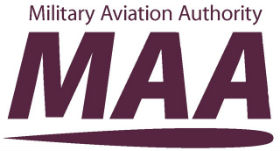The UK’s Military Aviation Authority (MAA) is seeking to allow readily-available commercial unmanned air vehicles to be operated by military personnel, as a lack of aviation experience currently prohibits them from doing so.
In order for non-traditional aviation units to be able to operate commercial off-the-shelf (COTS) UAVs, the current MAA classifications for unmanned systems – which were revealed under its RA1600 document released last January – would have to be altered to allow for non-aviators to use them.
One such example is the British Army media team, which wishes to use a DJI Inspire UAV for news-gathering, but aviation experience is currently expected within the chain of command for operating remotely piloted air systems (RPAS) by military personnel.
If operated by the UK’s Civil Aviation Authority, they would be permitted to fly them in accordance with the criteria set out in its CAP 722 UAV guidance document.
“Essentially, non-traditional aviation units are procuring RPAS to conduct tasks akin to what the CAA would categorise as aerial work under CAP 722,” Sqn Ldr Nichola Rennet of the MAA told SMi’s UAS conference in London on 19 November. “This could be media work, base security, range clearance and topographical surveys, and even looking at doing a top surface check of an aircraft.”
At the moment, the regulations prohibit potential operators from deploying UAVs, which stops them from carrying out simple tasks that are not tactical and could otherwise be carried out by civilian contractors, Rennet says.
“They are so easy to get hold of now that everybody is looking at a way of employing them,” she adds.
The MAA is also considering the possibility of allowing for more UAVs to be countable as “Class 1A” in the future: an MAA category that currently covers systems that weigh 200g or less.
Category 1A has the “lightest touch” in terms of regulations, and presently only the army’s Prox Dynamics Black Hornet UAV comes under this categorisation. It would benefit the MAA to be able to class more types under this, Rennet says, as this would allow for a more common sense approach to the operation of such equipment.
UAVs currently marked under 1A also have to operate at altitudes below 200ft – a categorisation that came about as a result of a study by the Defence Science and Technology Laboratory.
Source: Flightglobal

